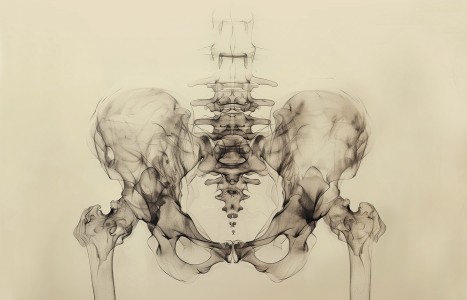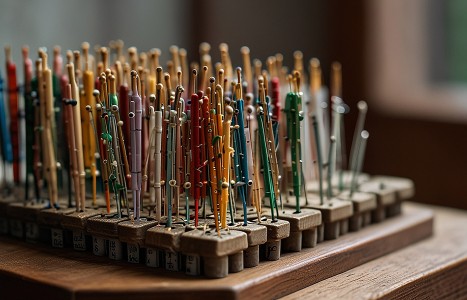People today want convenience, whether it be from their bank, credit card, favorite retail store, or restaurant. They demand it from the companies who hold their loyalty, including their health care providers (you). They don’t want to call and possibly be put on hold, and they want to use an app or schedule an appointment on your website. Here are three reasons your practice can gain by switching to online appointment scheduling.
Spirits of the Points: Governor (Du) Vessel
Points on the Governor (Du) and Conception (Ren) vessels are some of the most powerful points on the whole of the body, and may be conjoined with treatment of any of the elements and their corresponding meridians. The Conception and Governor vessels are likened to vast reservoirs or seas of energy, and using points on these vessels is essentially tapping into such huge reservoirs.
The Governor vessel is more yang predominant than the Conception vessel, which is more yin predominant. Classically, the image of yin and yang depicts the sunny and shady sides of a hill – the sunny side referring to its yang aspect and the shady side to its yin aspect. We observe that these two apparent opposites are interdependent, transform into each other, and together constitute a whole.
Thus, qualities of brightness, activity, upward and forward direction, warmth, and expansion (to name a few) are attributed to yang predominance. In Classical Five-Element Acupuncture practice, we tend to choose points on these vessels based more on the spiritual connotations suggested by their point names than their orientation of yang or yin predominance.
The selection of points is largely dependent on the physical, mental and spiritual needs of the patient, as perceived through our interaction, as well as by pulse findings. Below are some of the more commonly used points on the Governor vessel in this tradition.
(I realize there are many interpretations and uses of these points in various traditions, and the following is not meant to encompass all possibilities. Also, English translations of point names are those taught by Professor J.R. Worsley and published in Traditional Chinese Acupuncture, Volume 1 Meridians and Points by J.R. Worsley; published by Element Books, 1982.)
GV 1: Long Strength
This is the entry point of the Governor vessel, located at the bottom of the spine. The vertebral column holds us up and supports us. The point confers uprightness, strength, power, and endurance not only to the physical backbone when it has become weak or impaired, but also to the mental and spiritual backbone. As depicted in its name, it provides strength and reinvigoration for the "long haul," energizing all 12 meridians; as well as a strong re-boot when a patient has become energetically exhausted, stuck and inert.
GV 4: Gate of Life
All gates, when operating properly, open and close appropriately. When this gate is jammed shut, a patient’s vital life force, with its innate power, warmth and vitality, is virtually unavailable. If jammed open, energy can be wasted, dissipated and simply leak away. Such a patient may be unable to commit, engage and fully participate in life.
Like a fountain of youth, the point can summon, replenish and retain the vitality of life, in the correct amount, for the patient whose energy and vitality has been dissipated through overindulgence (sexual and otherwise), overexertion, inadequate rest, illness or trauma.
GV 8: Contracted Muscle
When muscles contract to the point of restriction, one is not free to be oneself, to express physically, mentally or spiritually. We call such a person uptight or rigid. Not only does the back or other parts of the physical body stiffen, but the mind also may be unable to relax, becoming closed, unable to move freely or get off of a stubbornly held position.
At the spirit level, one must be relaxed and open to meaningfully connect with others and the world. As suggested by the tai chi axiom, "Strength through softness," this point provides the internal strength to relax.
GV 12: Body Pillar
A pillar is a tall, vertical structure that provides essential support. We can observe that, as in the ruins of Greece and Rome, the walls and ceilings are gone, yet the pillars endure. We can liken a pillar to the central pole that holds up a tent. It must be firmly rooted in the earth, straight and without cracks, in order to withstand winds or bumps, lest the entire structure collapse.
In our bodies, the vertebral column is akin to such a pillar. We have a physical body, as well as a mental body and spiritual body, all of which need strength and support in order to maintain uprightness, even in the face of challenges. Thus, we tend to use this point for a patient who easily crumbles or collapses at any level, who is unable to take criticism, who is overly vulnerable, who too easily gives in to temptations and needs straightening up. This point confers the ability to stand tall and endure.
GV 14: Great Hammer
This is a reunion point of all the predominantly yang meridians, including the Governor vessel, meaning that its use has a profound effect on all. It has an immediate effect on head colds and fevers, essentially blowing them up and out. Used for its spiritual connotation, this point, like a sledgehammer, delivers a powerful whack or wake-up call to all of the organs and functions, and to every level.
We tend to use this point for one who is stuck in fixed ideas, obsessions, old patterns and behaviors, and cannot shake them loose and move on. The point is not generally used early in treatment, as more gentle strategies (such as command points) may well resolve such inertia; but when these fail to break up the old patterns, this point may well be considered.
GV 19: Posterior Summit
A summit is a peak or place higher than its surrounding areas. The word is derived from the Latin summum, meaning "the highest." As such, the view from such a place provides a high perspective – an attainment of a place of peace and unity, beyond the mundane minutia and worldly concerns that cause internal strife, uncertainty, fear, anger, sadness, and tend to separate us from one another and from the natural world. Politically, a summit meeting is a gathering of the highest-ranking officials of a state or nation, gathered to discuss issues, share ideas, and hopefully, resolve differences, come to unity, and prevent conflict or war.
The word posterior implies a view of the past – what has been, how we got to where we are, and how things can be resolved. We tend to use this point for patients who are having difficulty with self-reflection, learning from and resolving the past, and making appropriate changes.
GV 20: A Hundred Meetings
This point, located on top of the head, is similar in meaning to GV 19 and the two are often conjoined in the same treatment. If the pulses are felt to all be in the plus, or excess range, it may mean that there is an internal battle and chaos going on among the Officials. In this situation, these two points, if sedated, will tend to bring the chaos to an end and the pulses will typically drop to reveal their true state of fatigue and deficiency. Then, we typically tonify the meridians that have been diagnosed as the source of the trouble (called the Causative Factor in this tradition).
It is rather like soldiers on a battlefield. There may be frantic fighting, but when the battle is over, the soldiers are exhausted and in need of support and renewed strength. (Note: In some patients, the presence of such chaos may not manifest as excess pulses, in which case we would tonify GV 19 and 20, rather than sedate, right at the start.)
GV 20, used on its own, calls upon more than heads of state, but brings the wisdom and guidance of the ancestors to the meeting. The Chinese have always held the ancestors in great reverence. The ancestors are those who have seen it all and can put even the most challenging of situations in a sane and proper perspective. Whether one holds that they are actual beings existing at a level beyond our normal perception or deeper wisdom held within, this point can summon the wisdom that is available to every human being.


